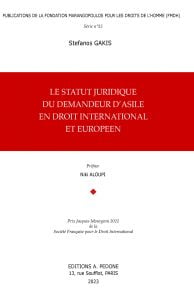
Author(s): A. Yotopoulos-Marangopoulos, Ph. Pazartzis
Unanimously adopted by the General Assembly of the United Nations on 9 December 1948, the Convention on the prevention and punishment of the crime of genocide figures among the first after-WWII instruments aiming at protecting and promoting human rights, with some particular characteristics. It was, in fact, a matter of legally establishing the notion whose authorship traces back to Raphaël Lemkin, thus materialising the response of the international community to the horror aroused by the scale of the atrocities committed during the Second World War.
From the outset, the Convention qualifies genocide as a “crime under international law”, contains a definition, which, despite its weaknesses, retains all its vitality having subsequently been transplanted as it is in other instruments, and establishes certain mechanisms for purposes of its repression and prevention.
The sixtieth anniversary since the adoption of the Genocide Convention is an opportunity to reflect once again on the evolution of the legal regime during this period and to focus on various aspects and questions that still preoccupy the international community with regard to the “crime of crimes”. On this occasion, the Hellenic Branch of the International Law Association and the Marangopoulos Foundation for Human Rights organised an international colloquium in Athens, on 12 and 13 November 2008, aiming at revisiting the provisions of the Convention in the light of recent developments. The proceedings of the Conference, published in this volume in English and in French, give an overview of the main contemporary problems relating to genocide.
